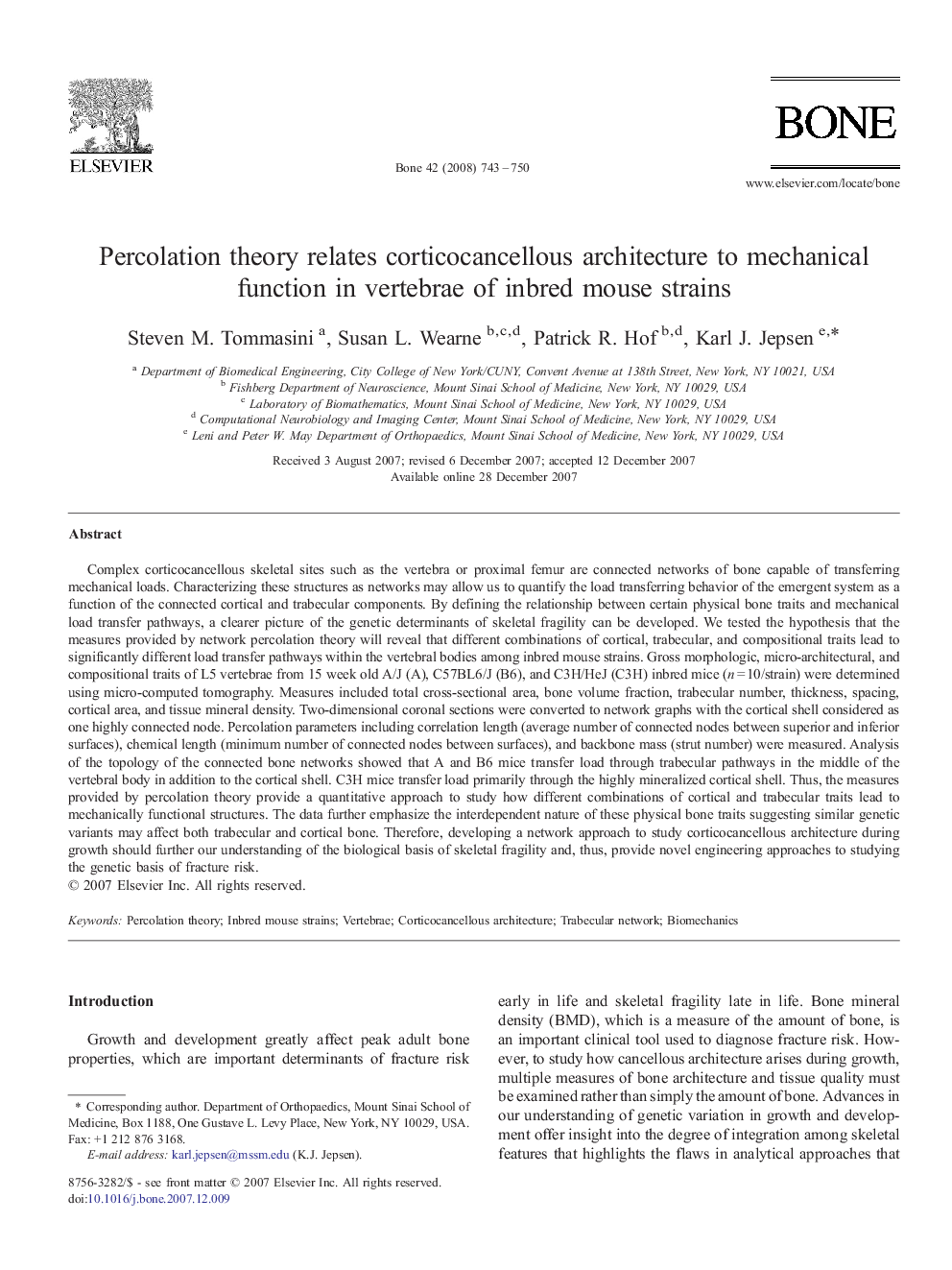| کد مقاله | کد نشریه | سال انتشار | مقاله انگلیسی | نسخه تمام متن |
|---|---|---|---|---|
| 2781673 | 1153331 | 2008 | 8 صفحه PDF | دانلود رایگان |

Complex corticocancellous skeletal sites such as the vertebra or proximal femur are connected networks of bone capable of transferring mechanical loads. Characterizing these structures as networks may allow us to quantify the load transferring behavior of the emergent system as a function of the connected cortical and trabecular components. By defining the relationship between certain physical bone traits and mechanical load transfer pathways, a clearer picture of the genetic determinants of skeletal fragility can be developed. We tested the hypothesis that the measures provided by network percolation theory will reveal that different combinations of cortical, trabecular, and compositional traits lead to significantly different load transfer pathways within the vertebral bodies among inbred mouse strains. Gross morphologic, micro-architectural, and compositional traits of L5 vertebrae from 15 week old A/J (A), C57BL6/J (B6), and C3H/HeJ (C3H) inbred mice (n = 10/strain) were determined using micro-computed tomography. Measures included total cross-sectional area, bone volume fraction, trabecular number, thickness, spacing, cortical area, and tissue mineral density. Two-dimensional coronal sections were converted to network graphs with the cortical shell considered as one highly connected node. Percolation parameters including correlation length (average number of connected nodes between superior and inferior surfaces), chemical length (minimum number of connected nodes between surfaces), and backbone mass (strut number) were measured. Analysis of the topology of the connected bone networks showed that A and B6 mice transfer load through trabecular pathways in the middle of the vertebral body in addition to the cortical shell. C3H mice transfer load primarily through the highly mineralized cortical shell. Thus, the measures provided by percolation theory provide a quantitative approach to study how different combinations of cortical and trabecular traits lead to mechanically functional structures. The data further emphasize the interdependent nature of these physical bone traits suggesting similar genetic variants may affect both trabecular and cortical bone. Therefore, developing a network approach to study corticocancellous architecture during growth should further our understanding of the biological basis of skeletal fragility and, thus, provide novel engineering approaches to studying the genetic basis of fracture risk.
Journal: Bone - Volume 42, Issue 4, April 2008, Pages 743–750